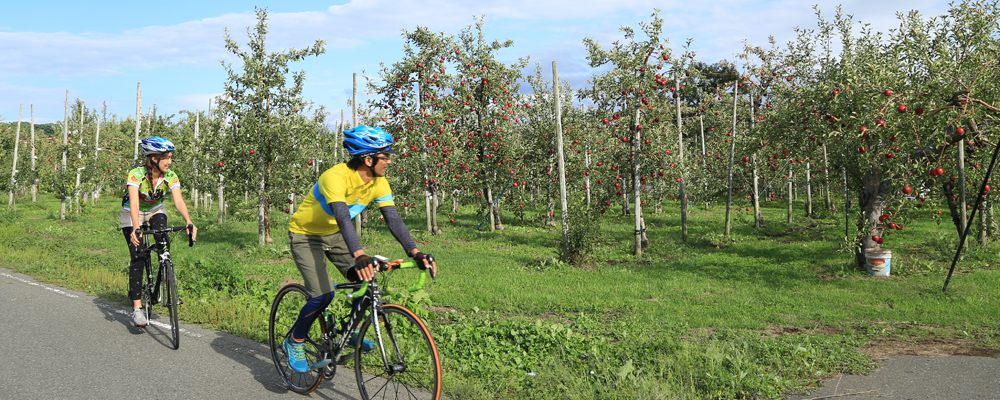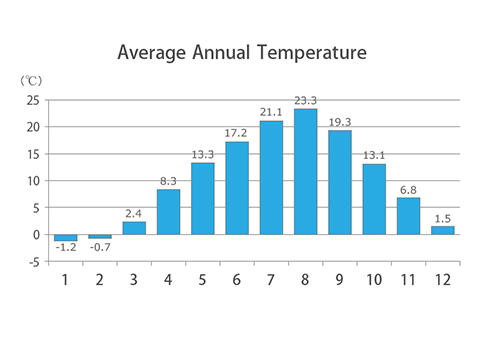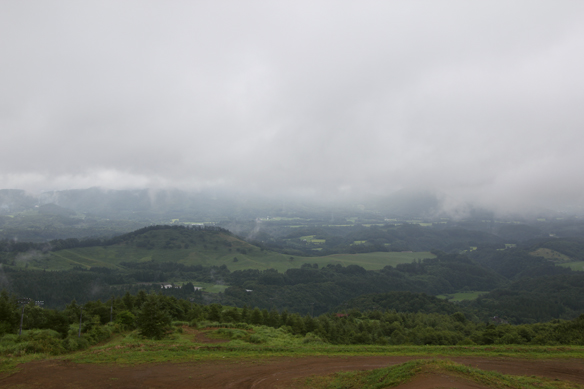IN ORDER TO ENJOY AOMORI
In order to enjoy cycling in Aomori, we introduce climate information and the best clothing options according to the season.

BASIC CLIMATE INFORMATION OF AOMORI


RECOMMENDED CLOTHES ADAPTED TO TEMPERATURE
SPORTS TYPE
The cycle jersey has a quick drying function to evaporate perspiration to prevent body temperature from rising, allowing comfortable riding.
As an anti-chill measures on the downhill, wearing an arm warmer or carrying a pocket-sized windbreaker is recommended.

Combine long pants or half pants + tights. Plus when it covers the neck, you can hardly feel the cold.

Minimizing exposed parts of the skin and taking percautionary measures against the cold weather are very important. Consider using earwarmers and gloves.

CASUAL TYPE
Short-sleeved shorts are the best. T-shirts are also acceptable, but let’s choose the one with breathable and fast-drying function.
It feels a bit chilly if you are just in a T-shirt, so bring another thin jacket.
It is best to wear a wind breaker since the wind feels cold.
When the temperature falls below 10 ℃, the wind feels very cold, so wear a long sleeve inner and an outer windproof outer.
CHARACTERISTIC OF THE CLIMATE IN AOMORI

Yamase(Cold Northeasterly Wind)
Yamase is the name for local northeastern winds that blow from the Pacific Ocean in the summer (June to August), which is the characteristic of the Tohoku district. As this wind blows, it may be cold even in the summer, so you need to be careful with what you wear.

Snowfall and Road Freezing
In early spring and late autumn, in high altitude areas such as Mt.Hakkoda and Mt.Iwaki, keep in mind that the climate and temperature at the foot of the mountain is not always same. Because there is likely to be road freezing, depending on the time, it’s good to check the exact weather forecast.
Accomodation List For Cyclists

